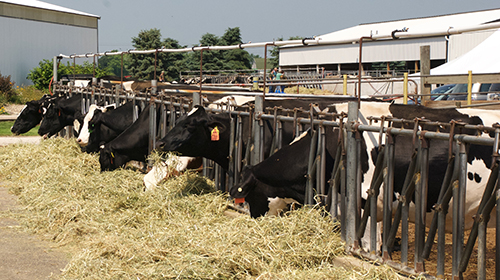
When it comes to dry period length, are we aiming for the right target?
"Most people will say ‘I dry my cows up 50 days before calving.' But how do you know when she will calve?" Jose Santos from the University of Florida asked dairy producers attending the GPS Dairy Forum last week.
He challenged producers to instead make grouping and dry-off decisions based on the number of days pregnant.
Santos shared data that showed average gestation length for a dairy cow to be 276 days, with a standard deviation of six days. In other words, almost 80 percent of cows will calve between 270 and 282 days in gestation.
"Whatever you do in terms of management and grouping has to revolve around these numbers," he said. "You are better off to work with days in gestation rather than days from calving because we are really speaking two different languages there."
Using this train of thought, when should cows go dry? Santos recommends that cows be dried up at 230 days pregnant, plus or minus three days.
Dry-off at 230 days results in a 45-day dry period. Farmers and researchers have experimented with both shorter and longer dry periods, but Santos warned against going too short, especially for younger cows. "A short dry period after the first lactation compromises subsequent lactations," he said.
For older cows, Santos explained that a 28-day dry period is acceptable, with no big production losses. There is, however, a risk for antibiotic residues from intramammary dry cow treatment.
At a minimum, first-lactation cows need a 45-day dry period, and older cows need 28 days. No cow needs more than 45 days dry, according to Santos, and no extra milk will be gained from a 60-day dry period. "To keep things simple, if you dry off all cows at 230 days, you will satisfy needs of both first-lactation and older cows," he said.
(c) Hoard's Dairyman Intel 2015
November 23, 2015








